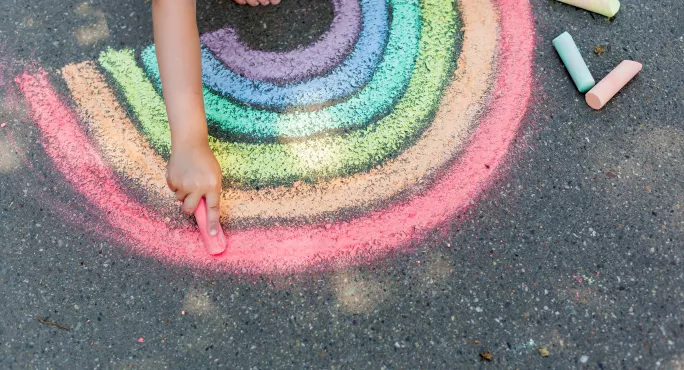- Home
- Home learning: Why art works for any subject
Home learning: Why art works for any subject

Art is one of those magical subjects that all primary school children tend to enjoy, regardless of whether or not they think they’re any good at it. This makes it an ideal vehicle for home learning tasks on any topic, particularly during lockdown.
Capitalising on children’s love of art when setting work remotely allows you to inspire creativity and to reinforce curriculum learning, without it feeling like learning - something that home-school-weary children and parents will thank you for.
Quick read: 5 tips for remote primary teaching after 7 weeks
Quick listen: How to handle working from home - a guide for teachers
Want to know more? 7 ways to make art inspiring at primary
Here’s how to make art tasks work for a variety of subjects.
The power of art for home learning
Maths
Getting pupils to look at the work of great artists with a mathematical eye is a brilliant way to familiarise them with basic maths principles.
Most teachers have heard of Escher (the Dutch artist whose work famously features mathematical objects and operations). Studying his work is a great way to learn about reflections, symmetry and tessellations.
Similarly, Rothko paintings provide an easy intro to estimating fractions and proportions. And for learning about angles, you can look to Kandinsky.
You can also get children to create their own mathematical works of art. Making origami, for example, can support their understanding of geometry and fractions, while making scale models will help them get to grips with scale. Get them to measure their own heads, spines, hips and so on and then divide those measurements by two or three. You could also ask them to create a wristwatch for a giant, who is three and a half times larger than they are.
Alternatively, take inspiration from abstract artists, such as Picasso. Challenge pupils to create an abstract picture, using a hundred-square grid, that is 75 per cent red, two-tenths blue and 0.05 yellow.
History
Up until the invention of the printing press and photography, art was one of the main forms of social documentation, providing a record of who and what was important, and reflecting the values of society.
Get pupils to look at works of art made during the period you have been studying and consider what those works tell us. You can also compare them to more recent representations.
For instance, the murals of Diego Rivera really help to bring Mayan culture to life, while the work of war artists such as Paul Nash and John Heartfield helps us to understand the brutality of war.
Handwriting
Children often find drawing to be more fun than the endless repetition of handwriting joins, and yet the fine motor skill control required is basically the same for both.
Select interesting objects for children to draw. This is a simple activity that will help develop the fine motor skills they need for writing. In class, you can leave different objects on pupils’ desks at random, but for a home-learning activity, you can ask children to select their own objects from what they have lying around the house.
Tracing over pictures or mindful colouring patterns is another simple way to hone fine motor skills.
Science
There has always been a strong interrelationship between art and science. Our prehistoric ancestors used their early understanding of forces to project paint on to hand stencils in caves; Renaissance artists used dissection to further their understanding of anatomy; and the Victorians recorded the discoveries of their time in intricate hand-drawn detail.
Take inspiration from Renaissance and Victorian artists and cover a detailed A4 size picture of the digestive system, or an organ like the heart, with a grid (each square lettered along the y axis and numbered along the x). Ask pupils to recreate the same grid on blank paper and then to carefully copy what lies in each particular square. This is a good way of reinforcing where things are, as careful, close observational drawing is brilliant at embedding understanding.
By trying some of these activities, you will not only be adding much-needed variety to pupils’ lockdown learning, you could also be encouraging a fascination with art that will lead children, like Leonardo da Vinci before them, to explore and invent ideas that have not yet been thought of.
Sally Kawagoe is a primary school teacher in the East Midlands. Prior to taking this job, she spent several years teaching in Mexico, Spain and Japan
Register with Tes and you can read two free articles every month plus you'll have access to our range of award-winning newsletters.
Keep reading with our special offer!
You’ve reached your limit of free articles this month.
- Unlimited access to all Tes magazine content
- Save your favourite articles and gift them to your colleagues
- Exclusive subscriber-only stories
- Over 200,000 archived articles
- Unlimited access to all Tes magazine content
- Save your favourite articles and gift them to your colleagues
- Exclusive subscriber-only stories
- Over 200,000 archived articles



